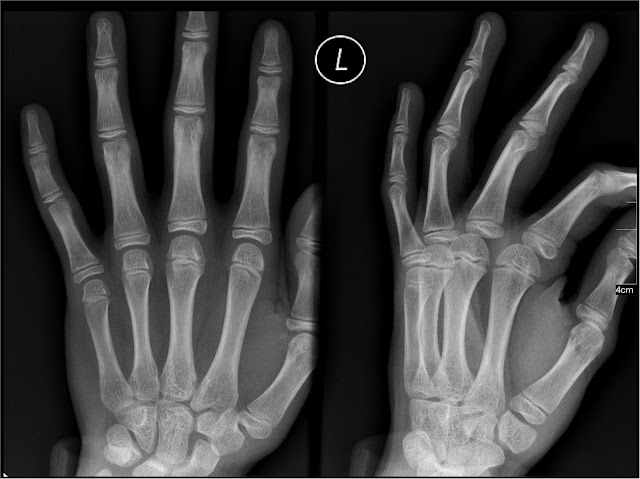X-ray pictures were the earliest medical imaging technique. The first X-ray film of the human body was taken in 1895 by the discoverer of X-rays Wilhelm Röntgen, showing his wife’s left hand with her wedding ring. Despite the development of newer technologies such computed tomography (CT), magnetic resonance imaging and ultrasonography, X-rays remain important for the diagnosis of many disorders.
Radiography Equipment
X-rays are a type of electromagnetic radiation, similar to visible light but with a wavelength shorter than can be seen with the human eye. In nature, X-rays are generated by violent events such as an exploding star. Medical X-rays, in contrast, are produced by passing a very large electrical voltage across a device called a vacuum or X-ray tube.When the current strikes a metal target inside the vacuum tube, X-rays are emitted, travelling with such high energy that they are able to pass through opaque objects placed in their path, in the same way that light passes through transparent substances such as glass. When the object is a human body, pictures produced by the X-rays can be used to visualize and diagnose a wide range of conditions.
The appearance of different body tissues on an X-ray picture depends on how much each tissue blocks the passage of the radiation. Bone, which blocks the most radiation, appears white, while air, which blocks the least, appears black. Tissues other than bone are represented by various shades of grey.
Digital X-ray Imaging
Traditionally, medical X-ray images have been exposed onto photographic film. X-ray films require processing before they can be viewed, however, and take up large amounts of storage space in hospitals and doctors’ offices. Over recent years, digital X-rays have become increasingly popular for radiological imaging.To obtain a digital X-ray picture, an electronic detector is used in place of a photographic film. This detector sends the signal produced by the X-rays to a computer, which converts the signal to a digital image that can be viewed on screen immediately and saved as required.
Radiological Imaging Using Medical X-rays
X-rays are especially useful for imaging the bones, but soft tissues such as the lungs and digestive system can also be viewed and X-ray images are important in the diagnosis of illnesses such as lung cancer and kidney stones.Other applications of medical X-rays include:
- dental X-rays, which can detect problems with the teeth at an early stage
- mammography to screen for breast cancer (digital mammography and computer-aided detection of abnormalities in the breast are recent advances in this field)
- fluoroscopy, which produces moving images used to examine the action of the gut or to guide a procedure such as implantation of a cardiac pacemaker.
Are Medical X-rays Safe?
As a type of radiation, any exposure to X-rays carries a risk of cancer. However, the amount of radiation produced by a single X-ray picture is extremely low compared with the background radiation that a person experiences every day from natural sources such as cosmic rays and radioactive minerals in the earth. Health professionals consider the benefits of an accurate diagnosis and treatment to far outweigh the small risk involved in X-ray imaging.The risks of X-rays are greater for young children and unborn babies, but the doctor will always bear this in mind when deciding on the need for medical imaging.
